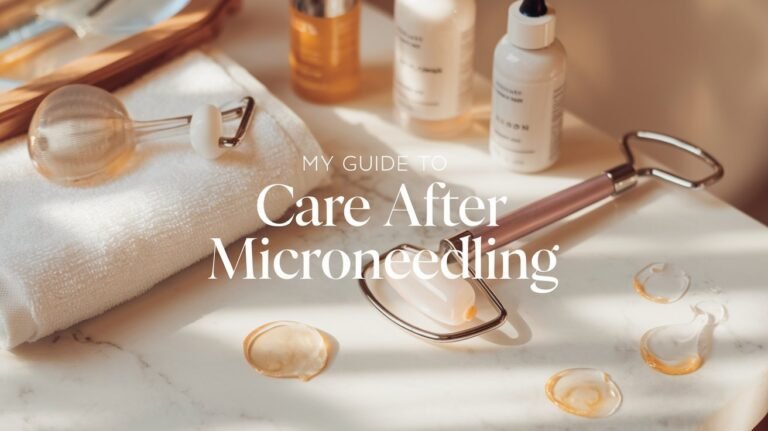How To Wound Care After Mohs Surgery?

Mohs surgery removes skin cancer with precision, but your healing starts with proper wound care.
I’m going to show you exactly how to care for your surgical site from day one through complete recovery. You’ll learn when to clean the wound, what products to use, and how to spot problems early.
This guide covers everything: initial bandage care, daily cleaning routines, infection prevention, and long-term healing.
You can trust these steps because they follow medical best practices.My goal is to help you heal quickly and safely.
Let’s get your wound care routine right from the start.
Why Proper Wound Care Matters

Your body needs support to heal correctly after Mohs surgery. The wound is fresh and vulnerable to infection in those first few days. Good care speeds up healing and reduces scarring.
What you do now affects how it looks later. I always tell patients that consistent care makes the biggest difference. Following your doctor’s instructions protects your investment in this surgery.
Understanding Mohs Surgery and the Healing Process

Mohs surgery removes skin cancer in layers. Healing happens in stages over several weeks depending on wound size.
What Is Mohs Surgery?
Mohs surgery removes skin cancer one thin layer at a time. Doctors check each layer under a microscope until no cancer cells remain.
It’s the most effective treatment for certain skin cancers, especially on the face. Most people have this procedure for basal cell or squamous cell carcinoma.
Healing Timeline
Your wound heals in three phases. Granulation forms new tissue in 5 to 7 days. Contraction pulls wound edges together over 2 to 3 weeks.
Maturation strengthens the scar over several months. Facial wounds heal in 1 to 2 weeks. Wounds on legs or trunk take 3 to 4 weeks or longer.
Immediate Post-Surgery Care (First 24 to 48 Hours)

The first two days are critical. Keep your bandage on, control any bleeding, and manage pain appropriately.
Keep Dressing On
Don’t touch that first bandage for at least 24 hours. It protects your wound from bacteria. Most surgeons want you to wait 24 to 48 hours before changing it.
When it’s time, wash your hands first and wet the bandage gently if it sticks.
Control Bleeding
A little bleeding is normal. Apply firm pressure with clean gauze for 15 minutes if needed. Ice helps reduce swelling in the first 24 hours.
Keep the surgical area raised above your heart when possible.
Manage Pain
Take acetaminophen if your doctor approves. Avoid NSAIDs like ibuprofen as they increase bleeding risk.
Skip alcohol for at least 48 hours. Avoid heavy lifting or exercise for a few days.
Daily Wound Care After 48 Hours

After two days, start gentle cleaning with mild soap. Apply ointment and fresh dressings to keep moisture in.
Clean the Wound
Wash your hands before touching your wound. Use mild soap and lukewarm water. Some doctors recommend diluted hydrogen peroxide for the first week.
Don’t scrub hard. Pat dry gently and clean once or twice daily.
Apply Ointment
Apply a thin layer of Vaseline or Aquaphor after cleaning. This keeps the wound moist and speeds healing. Cover with non-stick dressing like Telfa pads or Band-Aid.
Change dressing once or twice daily.
Preventing Infection and Promoting Healing

Watch for infection signs like unusual redness or fever. Eat well, stay hydrated, and protect from sun exposure.
Infection Signs
Check your wound daily. Watch for increased redness, warmth, swelling, yellow or green discharge, foul smell, or fever over 100.4°F.
Call your doctor right away if you notice any of these signs.
Diet Tips
Eat plenty of protein, vitamin C, and zinc. Include chicken, fish, oranges, and nuts.
Drink at least 8 glasses of water daily. Avoid excessive sugar and processed foods.
Protect from Sun
Keep your healing wound out of direct sunlight for at least a year. Wear a wide-brimmed hat outside. Use SPF 30+ sunscreen once the wound closes.
UV rays damage new skin and darken scars.
Special Considerations

Dissolving stitches and grafts need modified care. Address emotional stress that can affect your physical healing process.
Stitches and Grafts
Dissolving stitches disappear in 1 to 3 weeks. Don’t pull on them. Skin grafts are more delicate and need extra care.
You might need to stop hydrogen peroxide sooner and limit movement in that area.
Mental Well-Being
Wounds look worse before they look better. These feelings are normal. Talk to friends or family about your concerns.
Stress slows healing, so try deep breathing exercises. Focus on what you can control.
Follow-Up and Long-Term Skin Care
Schedule follow-up visits at 1 to 2 weeks and again at 3 to 6 months for monitoring and care.
Follow-Up Visits
Your first visit happens 1 to 2 weeks after surgery. The doctor checks healing and might remove stitches.
Schedule another visit at 3 to 6 months to monitor the scar and check for recurrence.
Reduce Scarring
Silicone gel sheets can flatten scars. Start once the wound closes. Gentle massage after 6 weeks helps too.
Some consider laser treatments after 6 to 12 months. Be patient. It takes a full year to see final results.
Conclusion
Caring for your wound after Mohs surgery is simple when you know the steps. Clean gently, keep moisture in, and watch for warning signs.
When I had a minor skin procedure last year, I followed these principles and healed beautifully.
Listen to your doctor and give yourself time. If you found this helpful, share it with someone facing surgery.
Have questions? Drop a comment below.
Frequently Asked Questions
How often do bandages change?
Change bandages once or twice daily after 48 hours. Always change if wet or dirty.
Can I shower?
Wait 24 to 48 hours first. Cover the wound with plastic wrap during showers.
When can I exercise?
Avoid exercise for 1 to 2 weeks. Start with light walking and gradually increase activity.
Will it look worse first?
Yes, wounds look red and crusty in the first week. This improves after 7 to 10 days.
What if stitches come loose?
Call your doctor immediately. Keep the area clean and don’t pull on loose threads.










